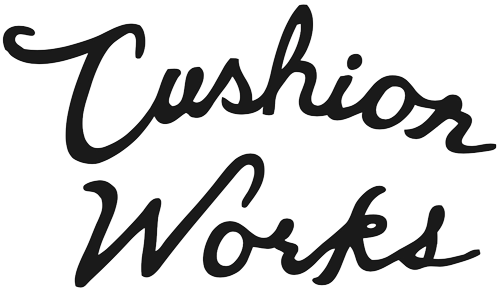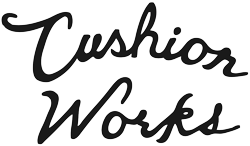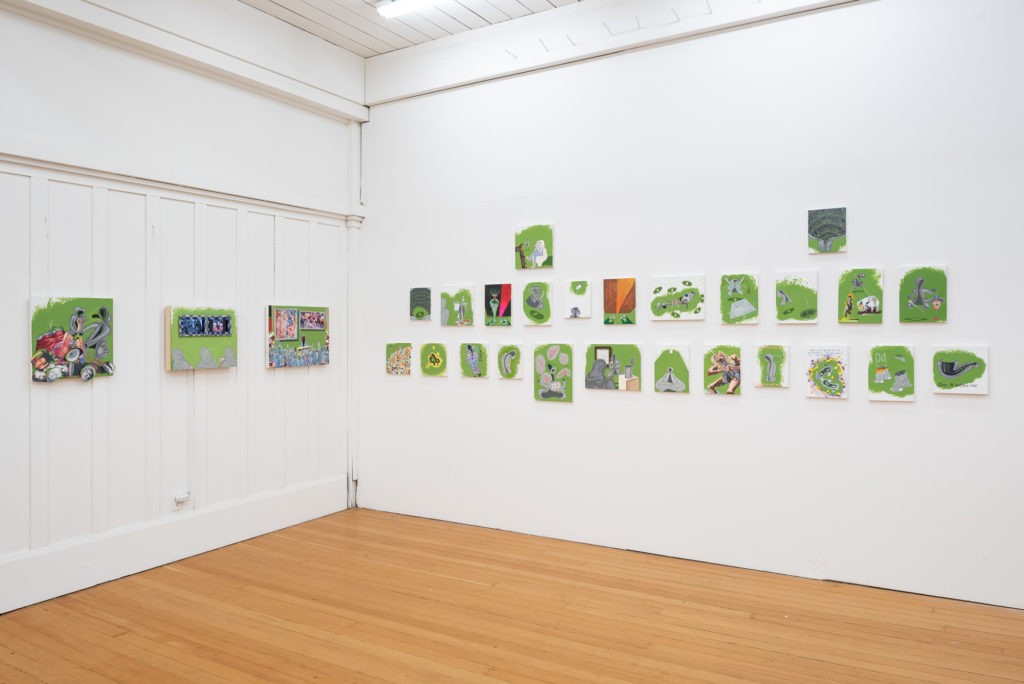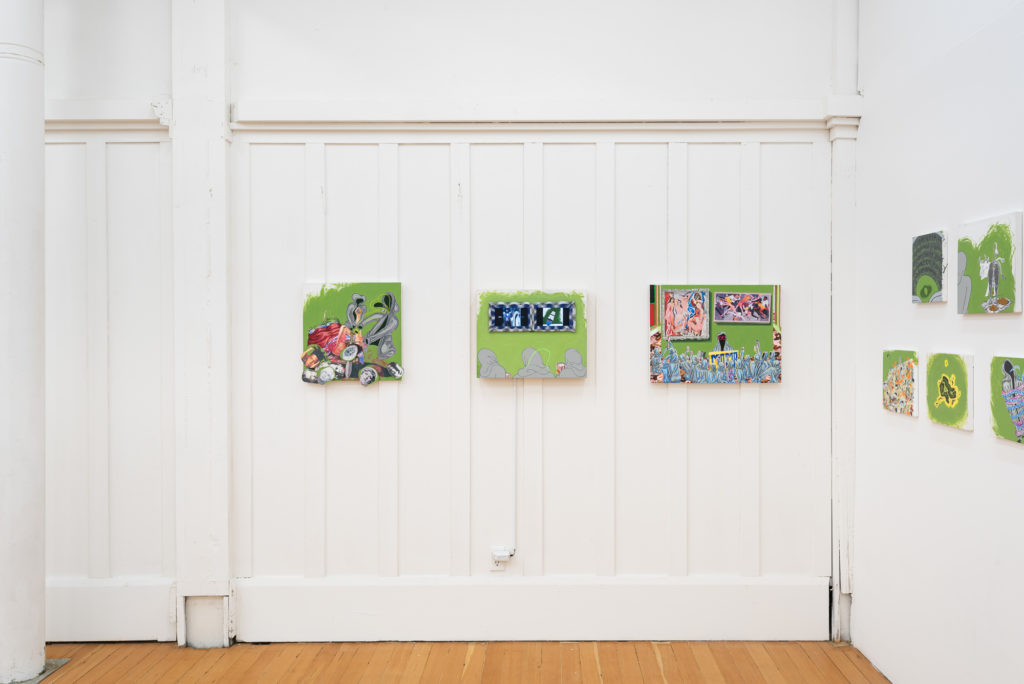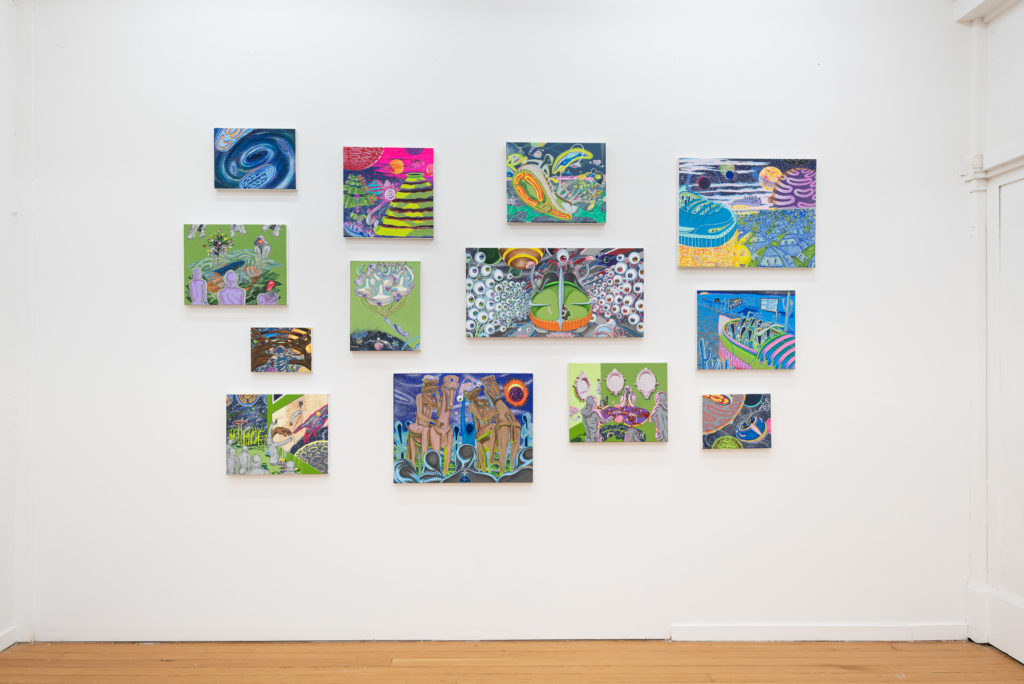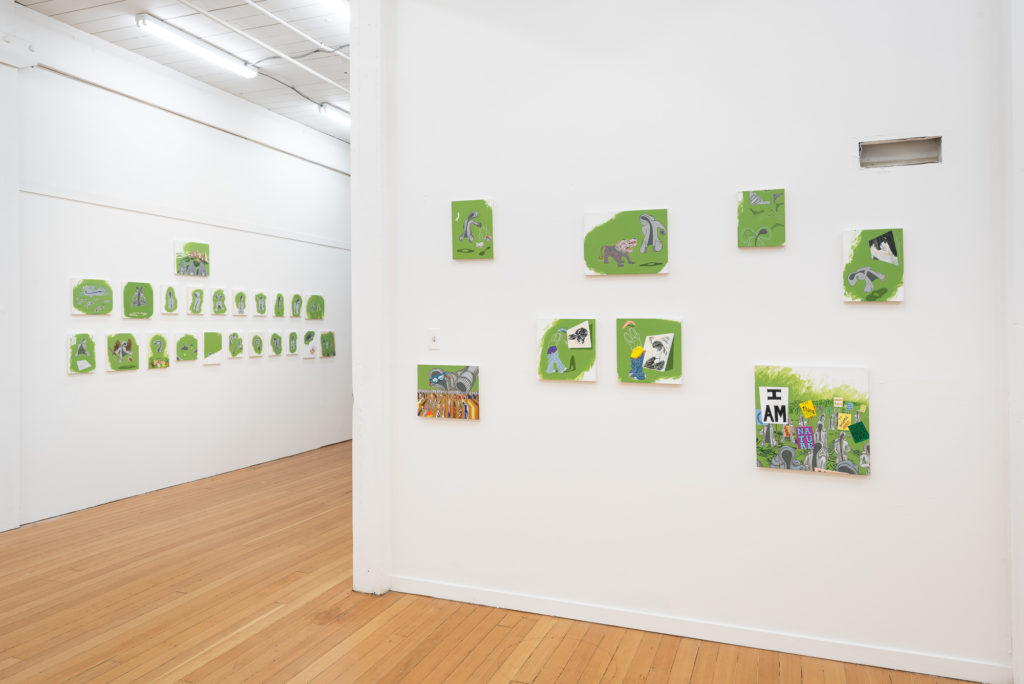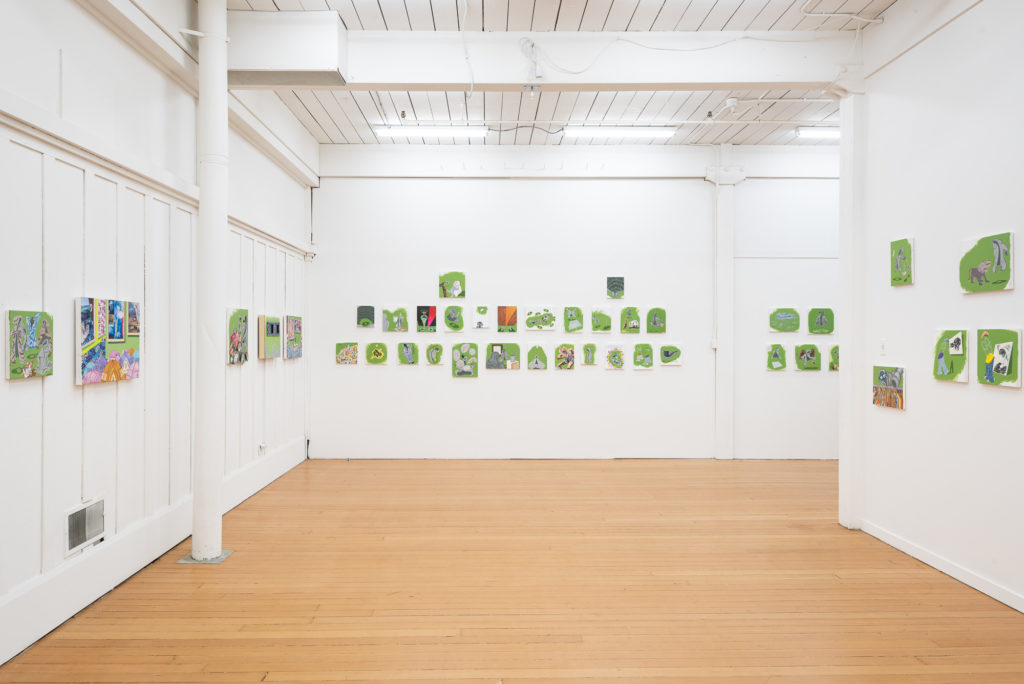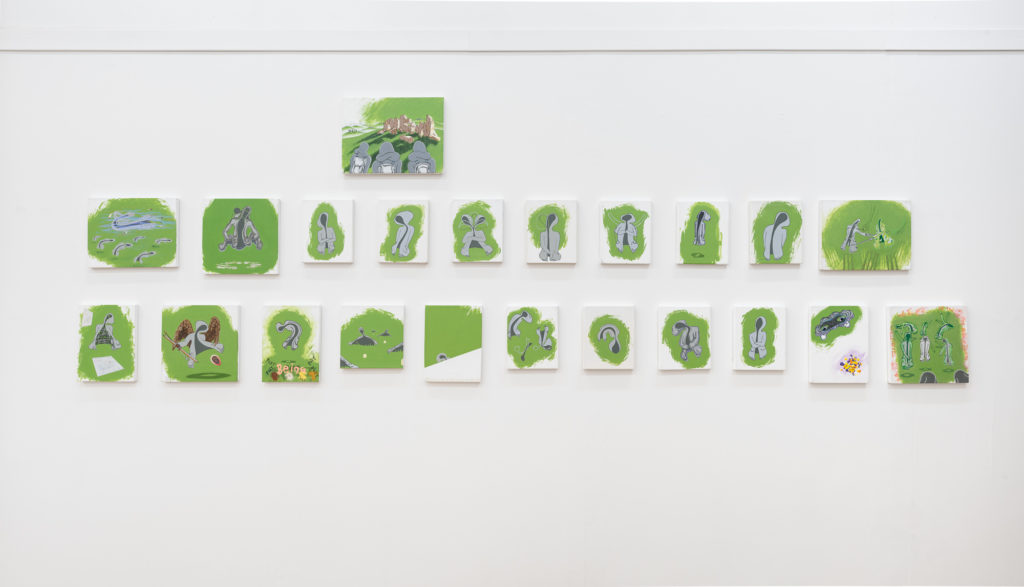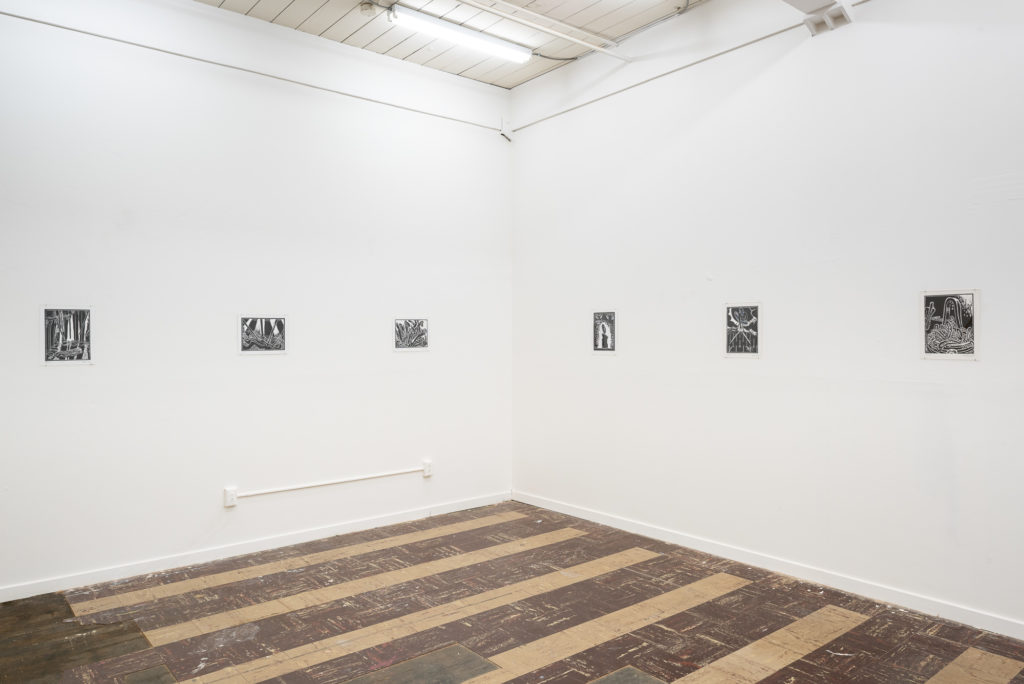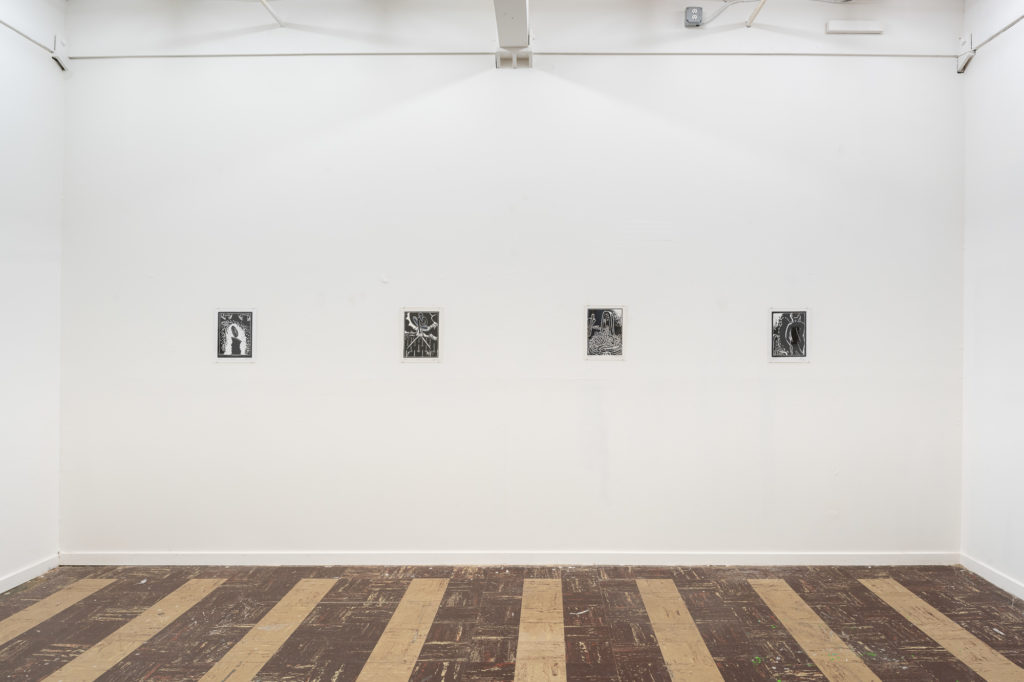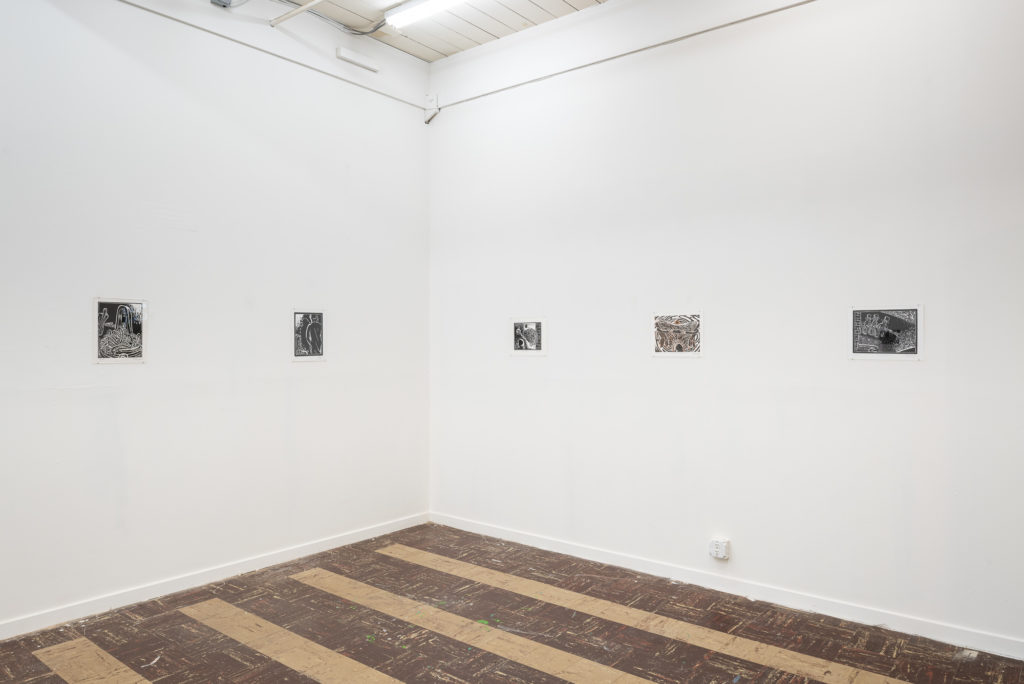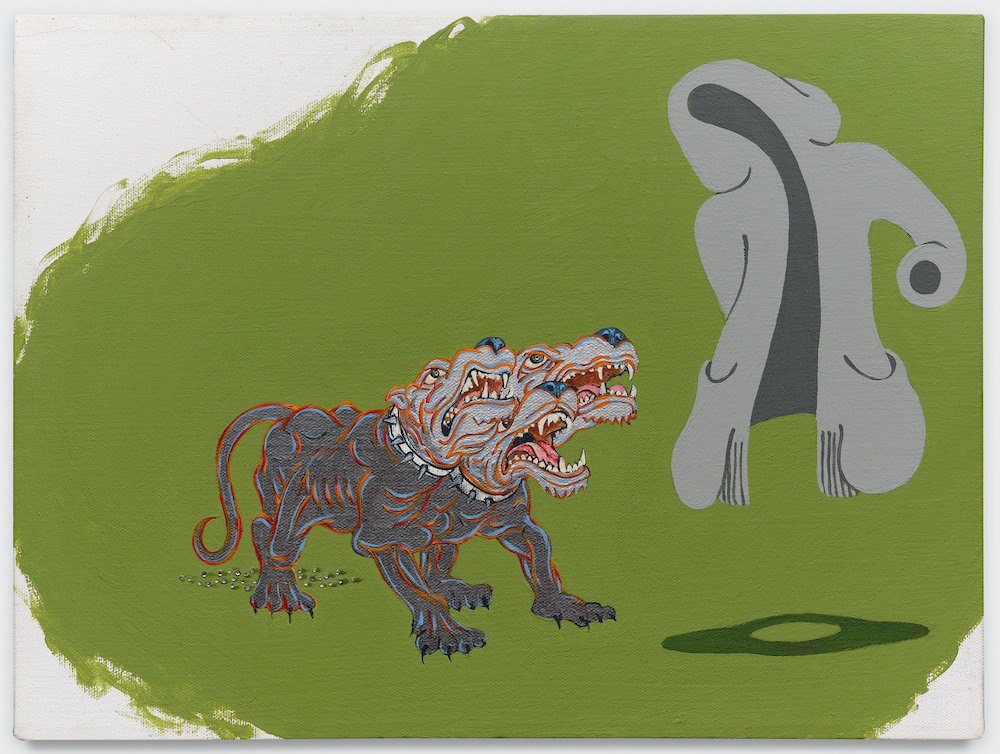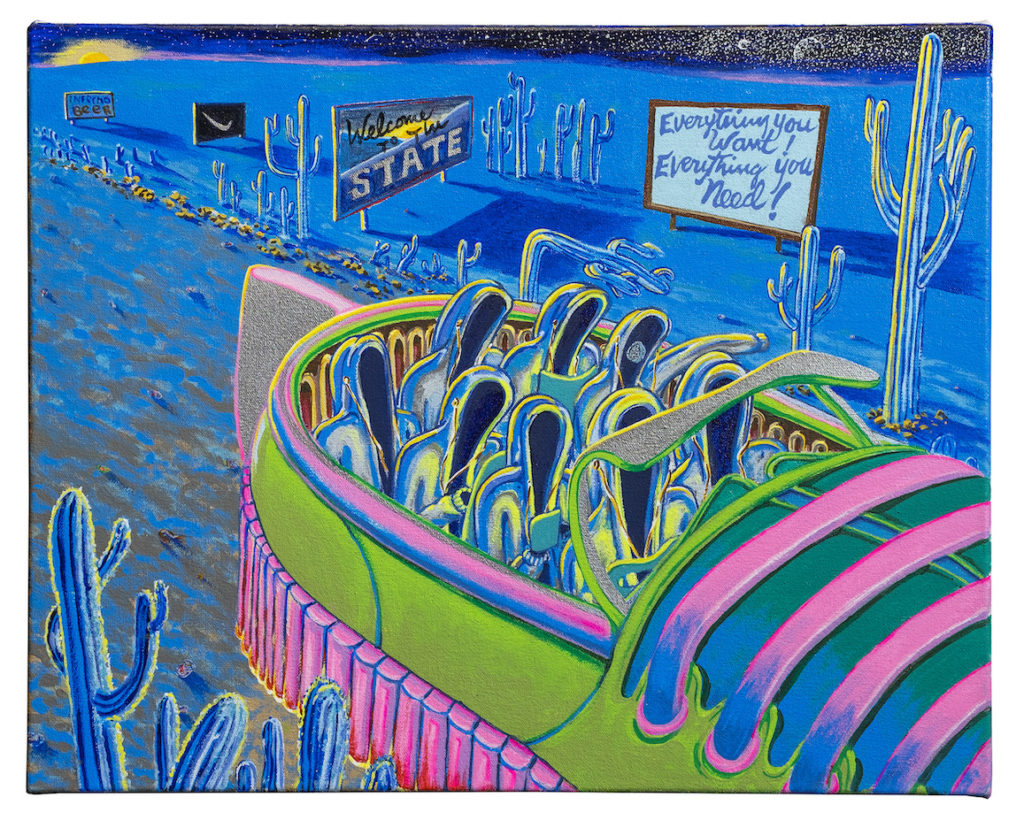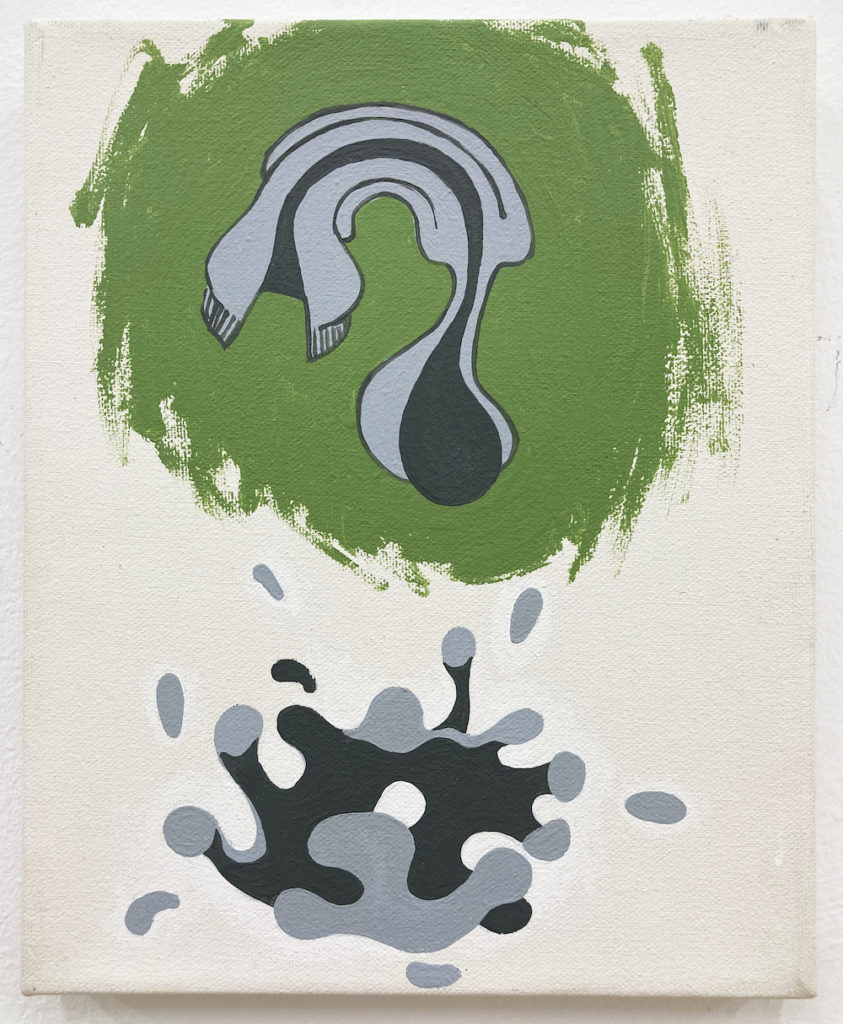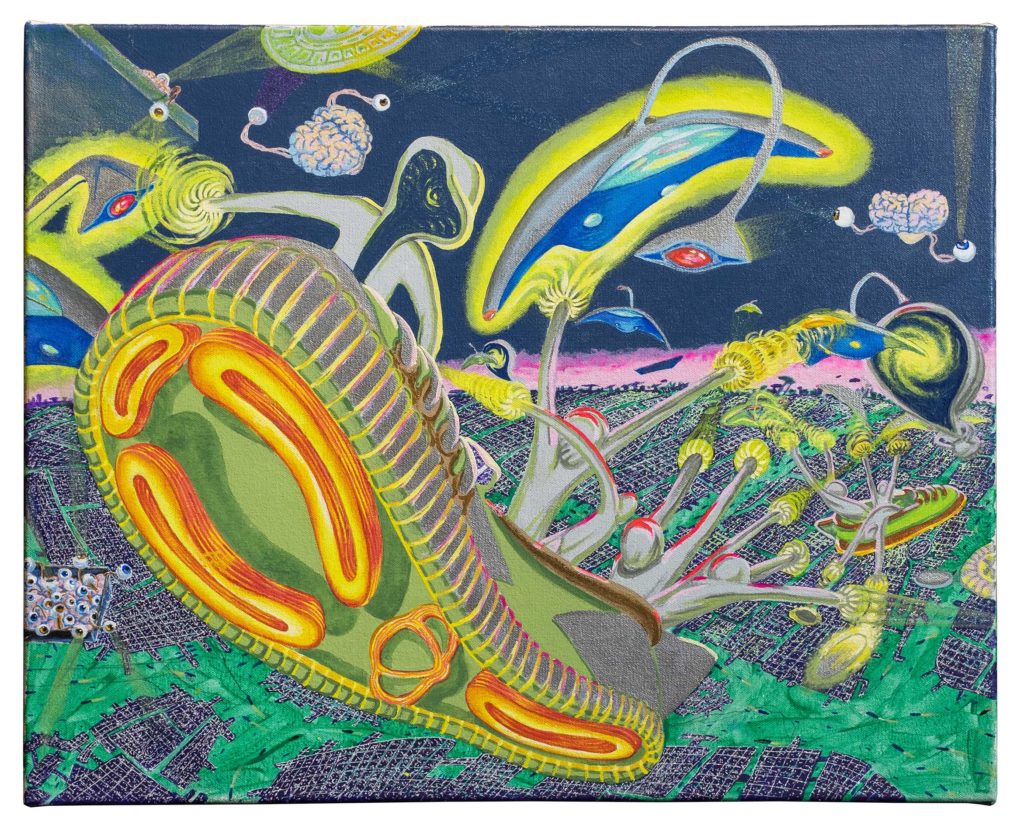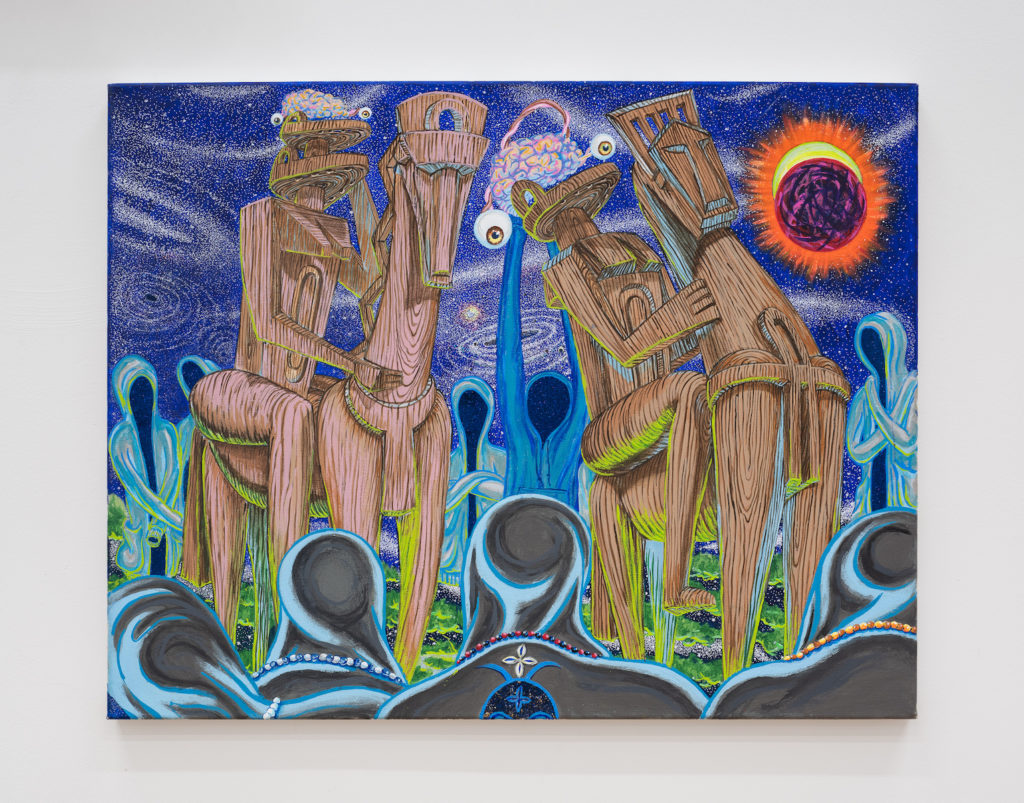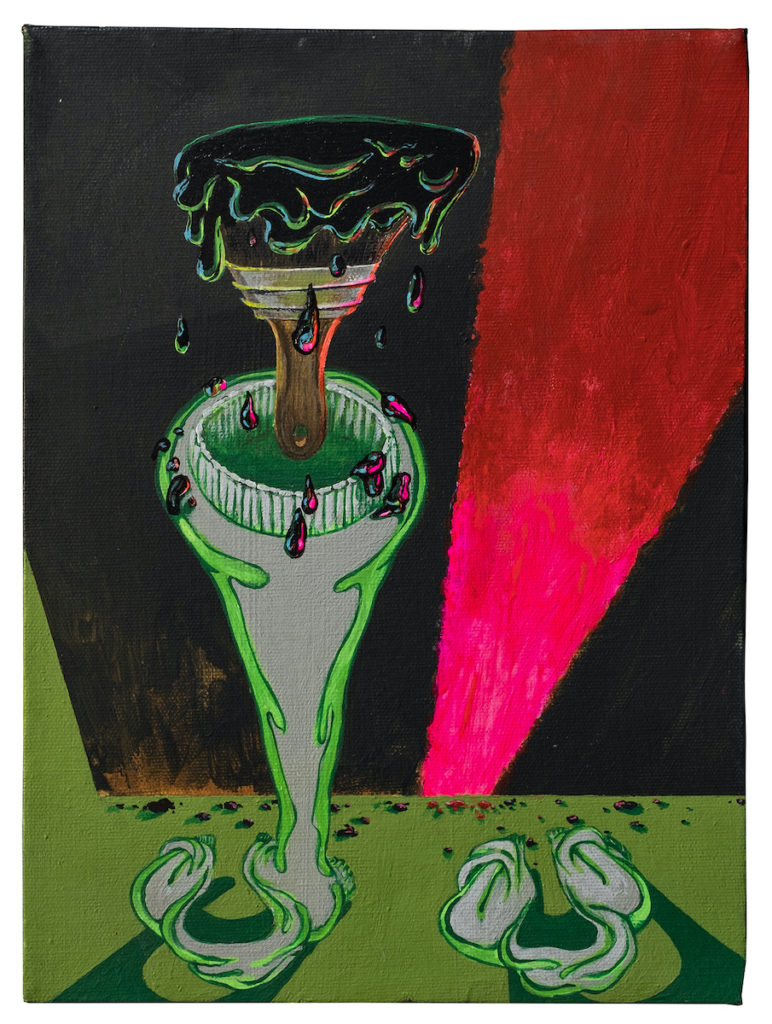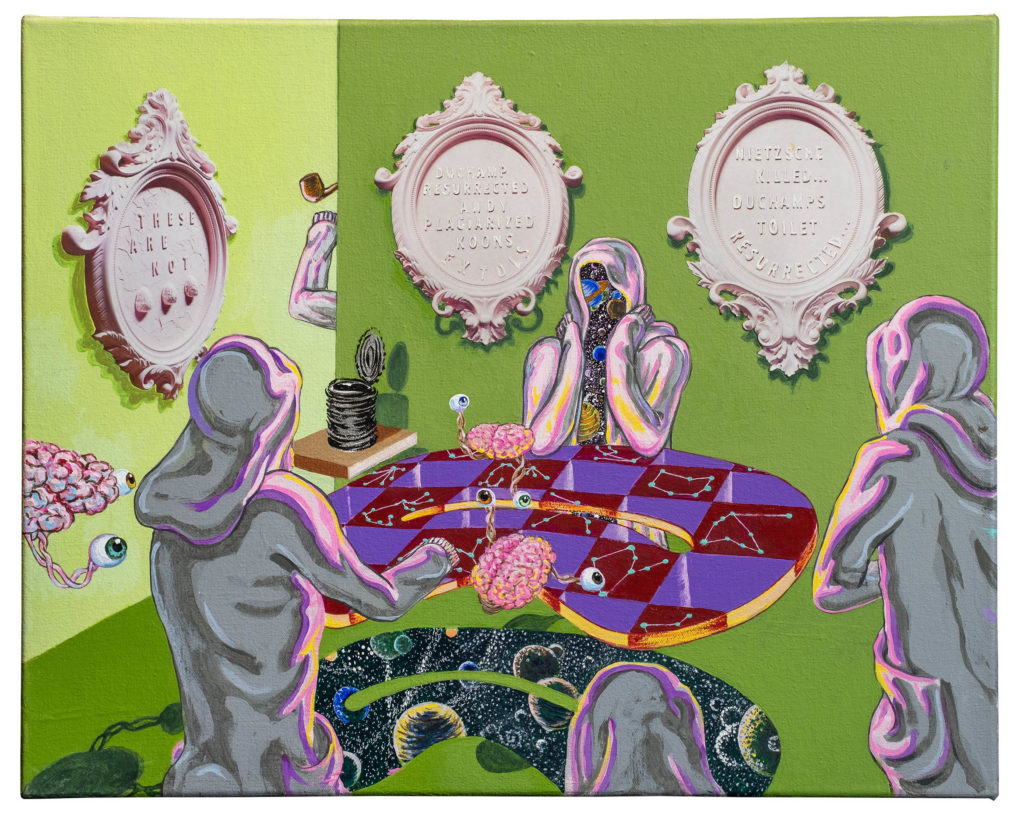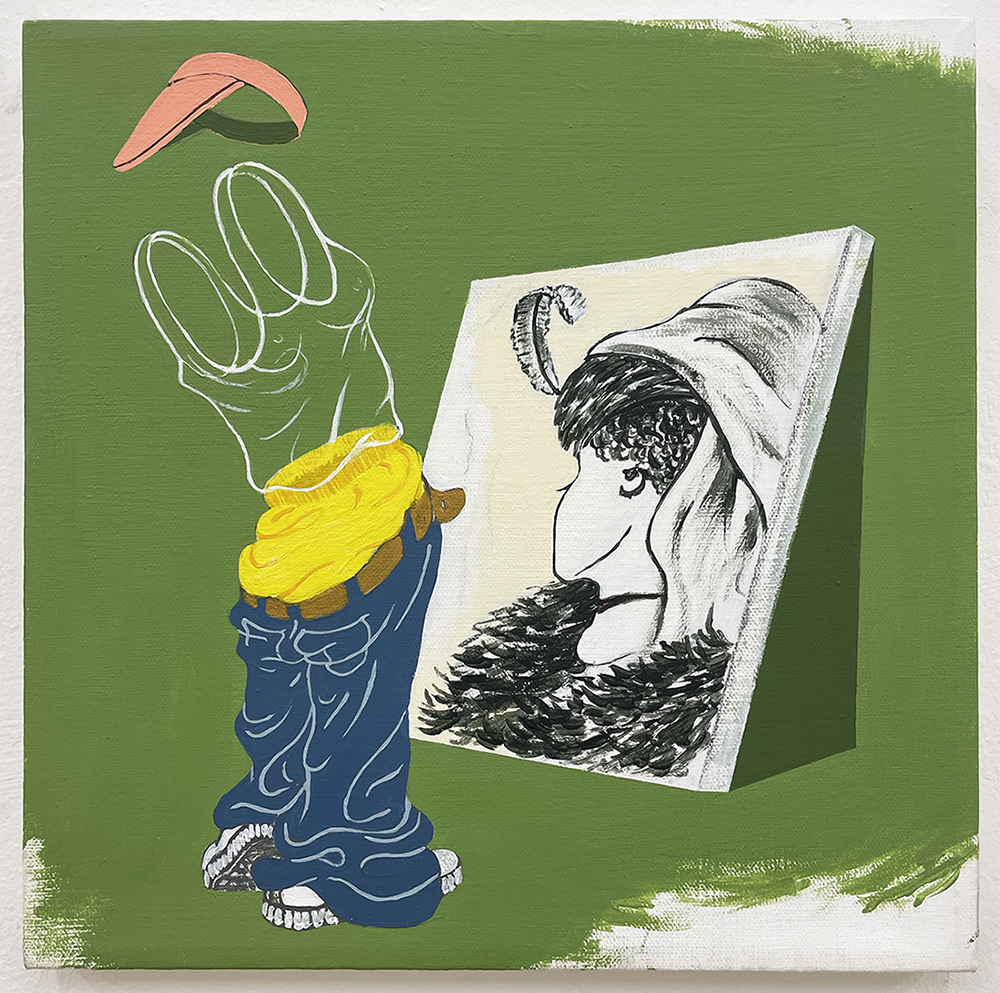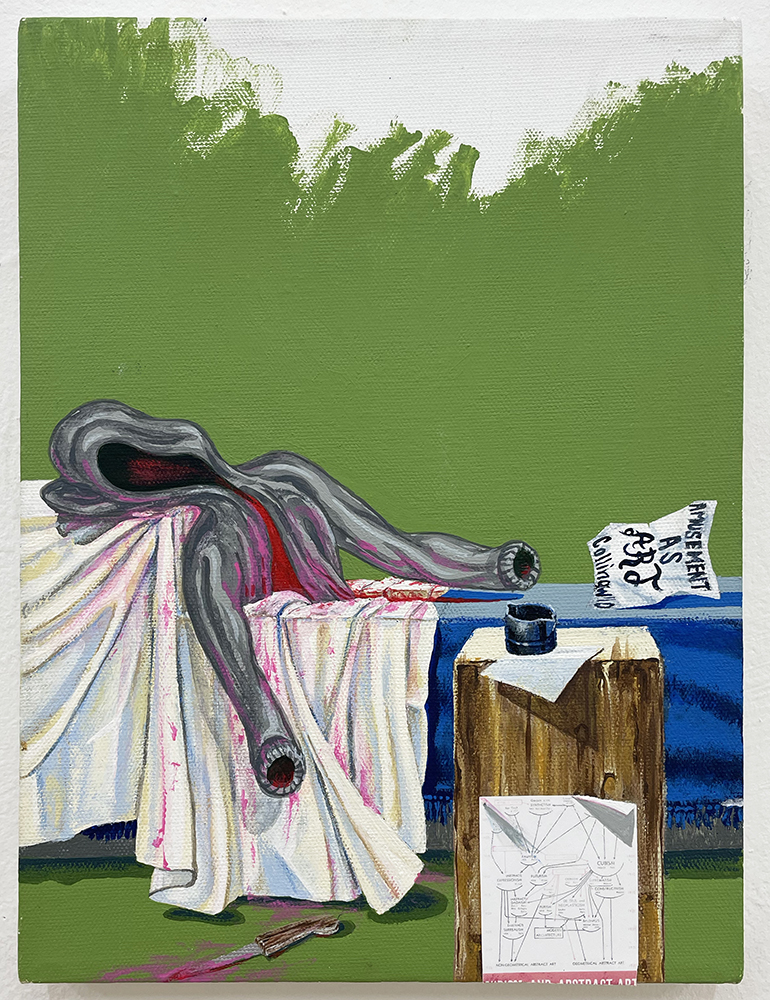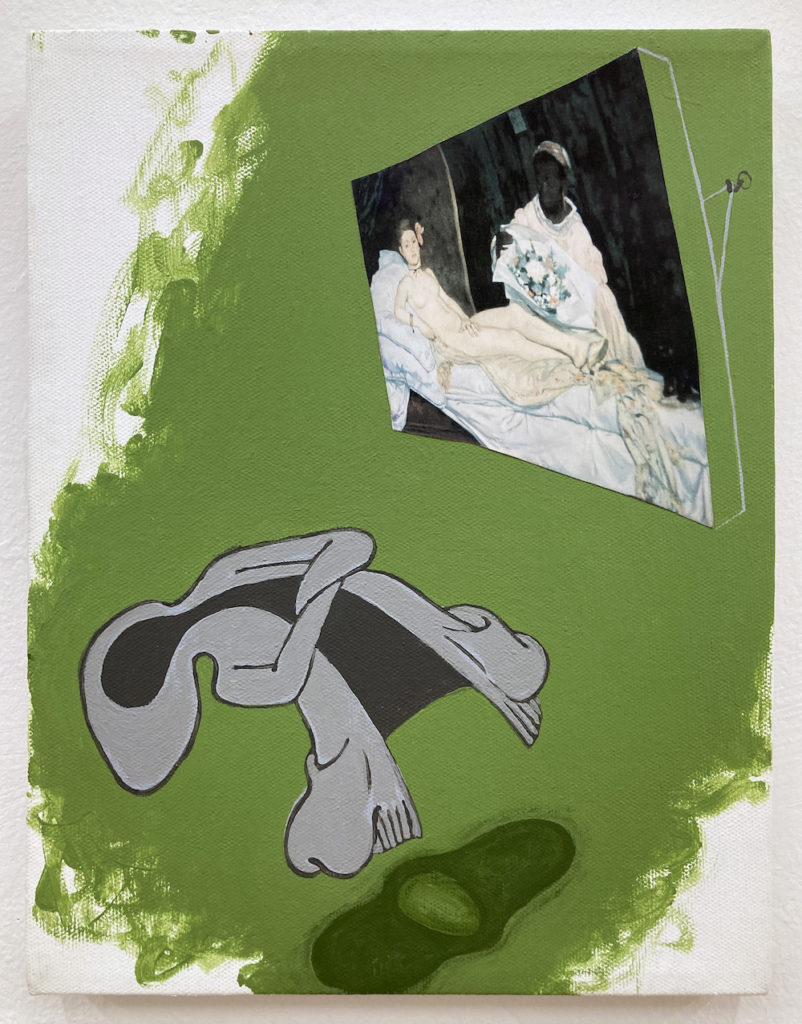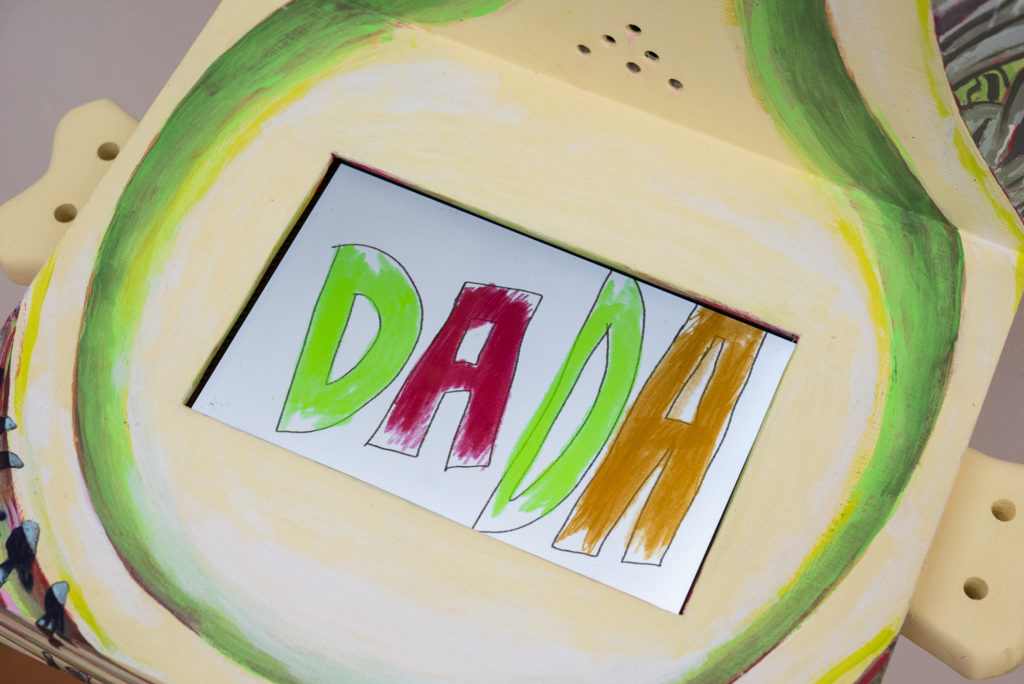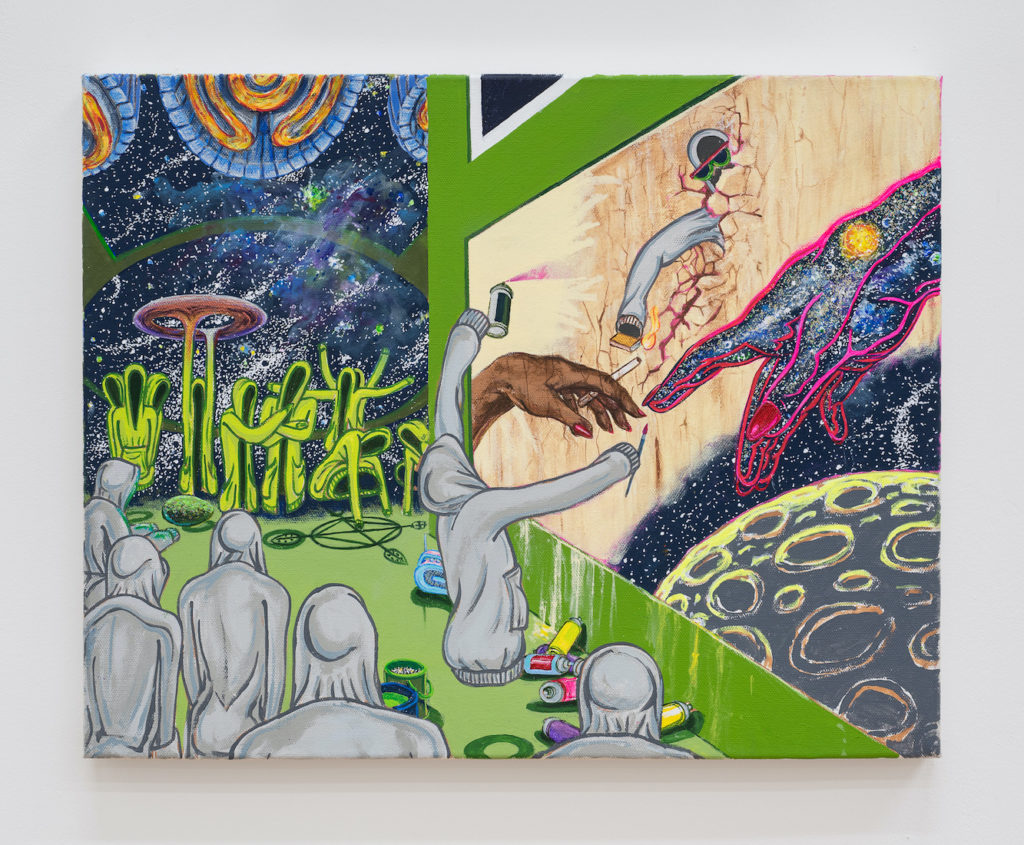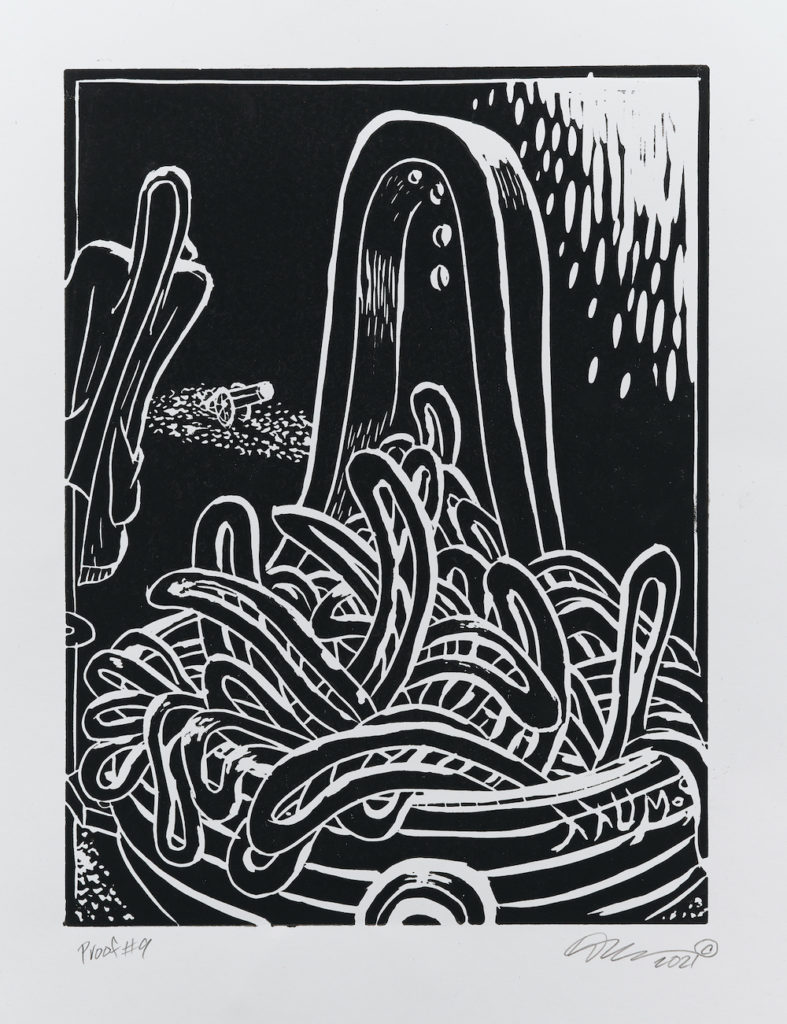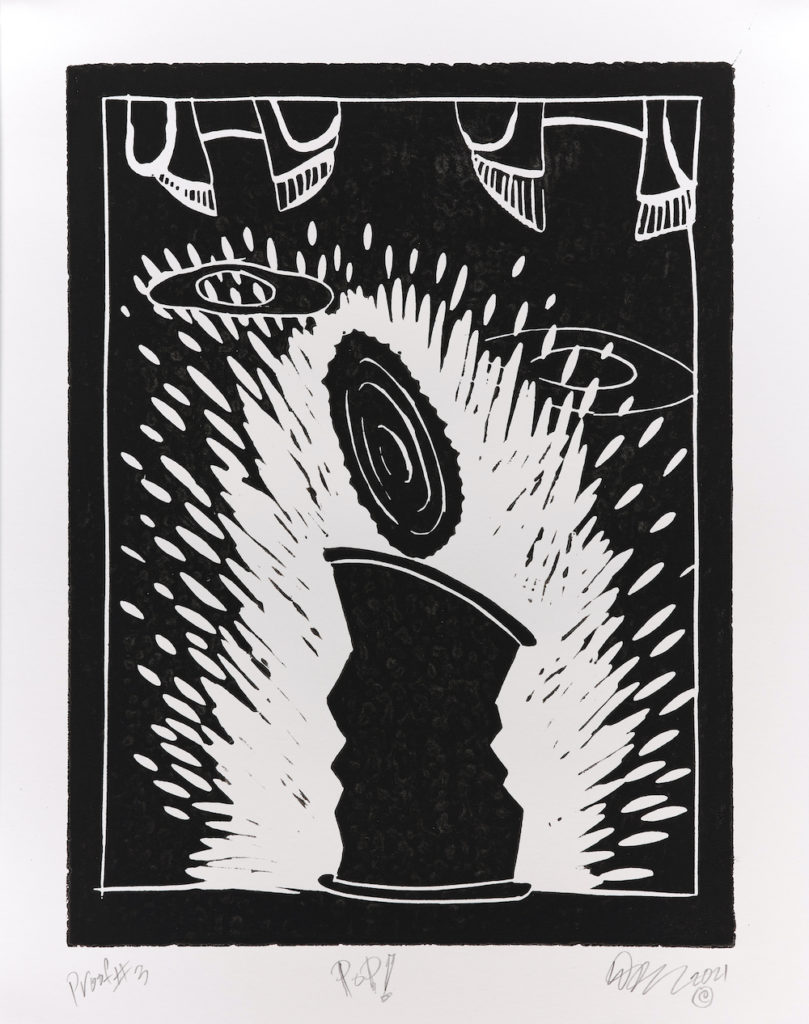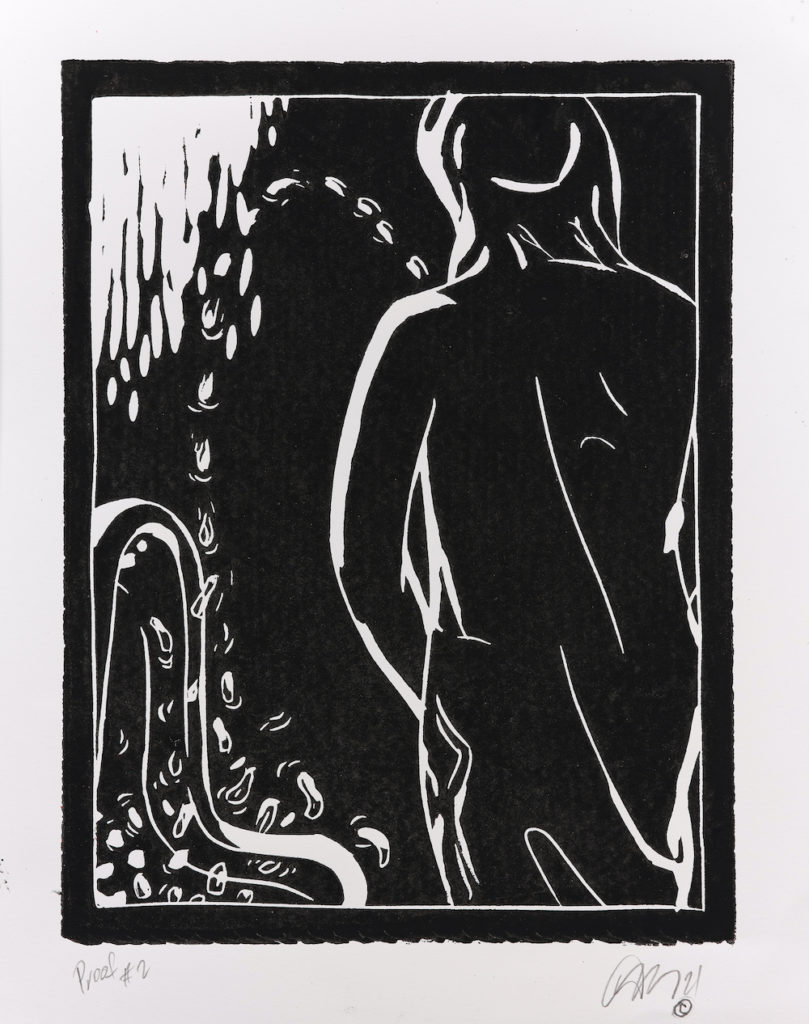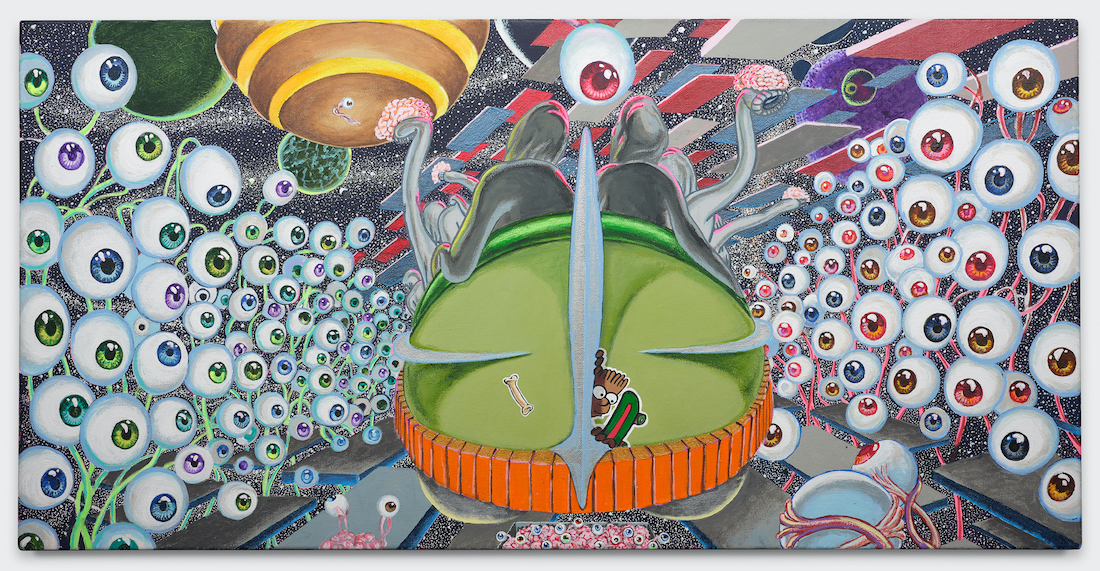
Dewey Crumpler: The Complete Hoodie Works, 1993–Present
September 25–November 20, 2021
Co-curated by Sampada Aranke
DEWEY CRUMPLER * BOOK RELEASE
Friday, November 5, 5–7pm
Curators Sampada Aranke and Jordan Stein in dialogue with the artist, 6:30pm
More information on the exhibition catalogue HERE.
Related merch HERE.
The Complete Hoodie Works, 1993–Present, by Maddie Klett, the Brooklyn Rail
Dewey Crumpler in conversation with Constance Lewallen, the Brooklyn Rail
Dewey Crumpler (b. 1949, Arkansas) has painted intergalactic hooded figures since the mid-1990s, when an interest in ritual objects, Black culture, and space-time cosmology married in his mind and studio. The Hoodies, as he calls them, are a cyclical preoccupation, rendered between the development of major bodies of work. He returns to them every few years, like a song stuck in the head. Hoodies are marginal figures painted in the margins; bodiless forms that come to life between robust bodies of work, and iterated on over the course of many decades, perpetually emergent.
Hoodies resemble human beings, but their outer form holds an unearthly void that permits traveling impossible distances, from the far reaches of outer space to the recently renovated wing of the Museum of Modern Art in New York. These figures are witnesses to history, and to art history, questioning dominant socio-cultural narratives simply by way of showing up.
The Hoodie paintings were publicly presented exactly once, and not in their entirety–the paintings are underknown in relation to a practice that is underknown. They have so far managed to fly in conditions of relatively low visibility, appearing only as flashpoints of Crumpler’s multifaceted studies, which consistently return to the ravages of racial capitalism, the unpredictability of African diasporic modes of abstraction, and the radicality of Black aesthetic practices across drawing, painting, and printmaking. Unlike his other works, the Hoodies bear a resemblance to caricature and cartoon, and iterate at a remarkable speed–they are more like process itself, or journal entries. Crumpler has been ambivalent about their presentation as the works are easy to ignore, misinterpret, or worse. But in a time of great social and political recollecting and reframing, the artworks call from their silent canvases, asking complex questions about lineage, likeness, and access. Who controls history? How does art align with power and resistance? What does it mean to witness through time? How is experience both a throughline and echo?
The artist’s life and career reflects a dedication to the force of art-making and teaching. His own story as an artist began when his mother bought him a drawing kit as a boy, and his aesthetic development included trips to San Francisco’s de Young Museum where he puzzled at the committed gaze of white audiences. In 1966, and invited by the Black Panther Party, he rendered iconic murals at George Washington High School in response to Victor Arnautoff’s controversial Life of Washington works. Decades later, in 2019, the project was in the national spotlight when questions of representation, trauma, and identity entered a new sphere of public consciousness.
The Complete Hoodie Works features over 100 artworks spanning three decades, a cascade of creativity embodying the artist’s lifelong commitment to the social force of painting. They are strange and smashing, personal and astronomical, critical and poetical. The exhibition is accompanied by an illustrated catalogue designed by Colpa Press and featuring an interview with the artist by curators Sampada Aranke and Jordan Stein.
Crumpler has taught in the painting department at the San Francisco Art Institute since 1989, where he has led classes on not only mark-making, but Jazz and African studies. His students have included Iona Brown and Kehinde Wiley, and he is the focus of scholarly writings by Melanie Herzog and Benjamin L. Jones. His most recent exhibitions include COLLAPSE: recent paintings by Dewey Crumpler at the Hedreen Gallery in Seattle, and Possessions, a virtual gallery at Frieze 2020 curated by Chisenhale Gallery Director Zoé Whitley. Crossings, a large-scale exhibition of his recent Shipping Container works, opens in 2022 at the Richmond Art Center in Richmond, California. His work is in the permanent collections of the Oakland Museum of California; the Triton Museum of Art, Santa Clara, CA; and the California African American Museum, Los Angeles. Select Hoodie paintings were exhibited in Of Tulips and Shadows, a 2008 exhibition at the California African American Museum.
Sampada Aranke (PhD, Performance Studies) is an Assistant Professor in the Art History, Theory, Criticism Department at the School of the Art Institute, Chicago. Her work has been published in e-flux, Artforum, Art Journal, ASAP/J, and October. She has written catalogue essays for Sadie Barnette, Rashid Johnson, Faith Ringgold, Kambui Olujimi, Sable Elyse Smith, and Zachary Fabri. Aranke is currently working on her book manuscript entitled Death’s Futurity: The Visual Life of Black Power.
Installation photographs by Phil Maisel. Special thanks to Eric Ruby, Chris Grunder, Chris McKee, Cole Solinger, and Lindsey White.
